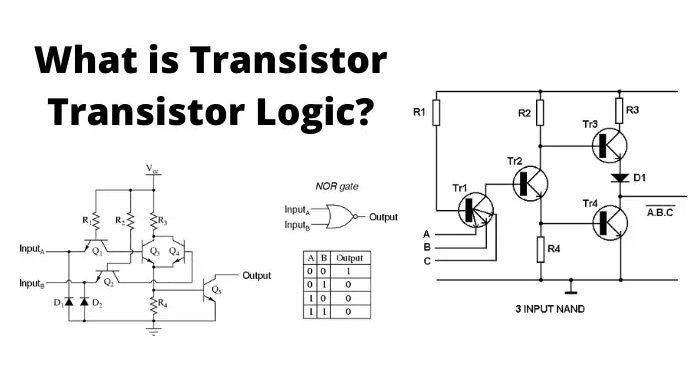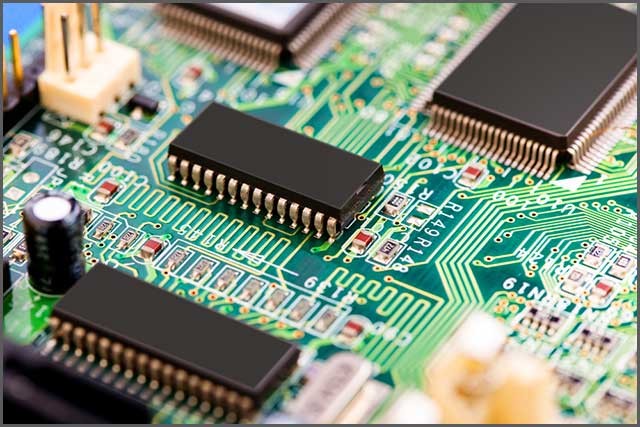Understanding TTL Logic: The Basics
 TTL logic, or Transistor-Transistor Logic, emerged in the 1960s as a revolutionary advancement in digital electronics. Unlike its predecessor DTL (Diode-Transistor Logic), TTL utilizes bipolar junction transistors (BJTs) for both the logic gating and amplifying functions, resulting in faster switching speeds and improved performance.
TTL logic, or Transistor-Transistor Logic, emerged in the 1960s as a revolutionary advancement in digital electronics. Unlike its predecessor DTL (Diode-Transistor Logic), TTL utilizes bipolar junction transistors (BJTs) for both the logic gating and amplifying functions, resulting in faster switching speeds and improved performance.
Core Principles of TTL
At its heart, TTL operates on a simple binary principle where voltage levels represent logical states:
- Logic HIGH (1): Voltage between 2.7V and 5V
- Logic LOW (0): Voltage between 0V and 0.8V
- Undefined region: Voltage between 0.8V and 2.7V (should be avoided)
TTL Logic Families and Characteristics
| TTL Series | Propagation Delay | Power Consumption | Key Features |
|---|---|---|---|
| Standard (74xx) | 10ns | 10mW | Original series, widely used |
| Low-power (74Lxx) | 33ns | 1mW | Reduced power consumption |
| Schottky (74Sxx) | 3ns | 19mW | High speed |
| Low-power Schottky (74LSxx) | 9.5ns | 2mW | Best power-speed trade-off |
Advantages of TTL Technology
- High noise immunity
- Standardized voltage levels
- Wide operating temperature range
- Reliable performance
- Cost-effective manufacturing
Applications and Implementation
TTL logic finds extensive applications across various electronic systems and devices. From simple digital circuits to complex computing systems, TTL’s versatility makes it an enduring choice for engineers and designers.
Common Applications
- Digital counters and registers
- Arithmetic logic units (ALUs)
- Memory addressing systems
- Industrial control equipment
- Educational and experimental circuits
- Legacy computing systems
Design Considerations and Best Practices
When implementing TTL logic in circuit design, several key factors must be considered to ensure optimal performance and reliability. Understanding these aspects is crucial for successful implementation.
Critical Design Parameters
- Power supply requirements (typically 5V ± 0.25V)
- Fan-out limitations
- Noise margin considerations
- Timing constraints
- Heat dissipation management
TTL vs Other Logic Families
| Feature | TTL | CMOS | ECL |
|---|---|---|---|
| Power Consumption | Moderate | Very Low | High |
| Speed | Medium to High | Medium | Very High |
| Noise Immunity | Good | Excellent | Poor |
| Cost | Moderate | Low | High |
Modern Relevance and Future Prospects
While newer technologies have emerged, TTL continues to maintain its relevance in specific applications and industries. The fundamental principles of TTL have influenced modern digital design practices and continue to serve as a foundation for understanding digital logic.
Integration with Modern Technologies
Modern semiconductor manufacturers like Winsok continue to innovate in the field of digital logic, incorporating TTL principles into advanced MOSFET designs. These developments have led to improved performance characteristics while maintaining compatibility with traditional TTL systems.
Why Choose Winsok MOSFETs through Olukey?
- Direct access to premium Winsok components
- Comprehensive technical support
- Competitive pricing structure
- Reliable supply chain
- Quality assurance guarantee
Practical Implementation Tips
When working with TTL logic, following proper implementation guidelines ensures optimal circuit performance and reliability:
Circuit Design Guidelines
- Always use proper bypass capacitors
- Keep signal traces as short as possible
- Implement appropriate termination when necessary
- Consider power distribution carefully
- Account for propagation delays in timing-critical applications
Troubleshooting and Maintenance
Effective troubleshooting of TTL circuits requires understanding common issues and their solutions:
| Common Issue | Possible Cause | Solution |
|---|---|---|
| Inconsistent Output | Power supply fluctuation | Verify power supply stability |
| Signal Noise | Inadequate bypassing | Add appropriate bypass capacitors |
| Timing Errors | Propagation delay issues | Review timing requirements |
Industry Applications and Success Stories
Across various industries, TTL logic continues to play a crucial role in system design and implementation. From automotive electronics to industrial automation, the reliability and proven performance of TTL make it a trusted choice for critical applications.
As an authorized distributor of Winsok components, Olukey provides comprehensive solutions for your TTL and MOSFET requirements. Our expertise ensures you receive not just components, but complete support for your design and implementation needs.
Get Started with Premium TTL Solutions
Ready to enhance your digital logic implementations with high-quality components? Olukey, in partnership with Winsok, offers premium solutions tailored to your needs.
Technical Resources and Support
Access our comprehensive technical resources and expert support to optimize your TTL implementations:
- Detailed technical documentation
- Application notes and design guides
- Expert consultation services
- Sample request program
- Custom solution development
Partner with Olukey Today
Experience the difference of working with a trusted distributor of Winsok components. Our commitment to quality and service excellence ensures your success in TTL logic implementation.
























